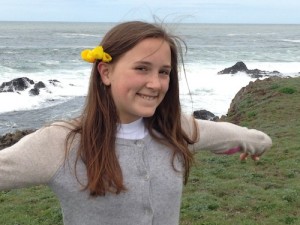Restorative design is defined as reversing damage that has been caused by either nature or humans. We will strive to meet  these following restorative design principles throughout the design process and during management of the Noyo Center site and facilities:
these following restorative design principles throughout the design process and during management of the Noyo Center site and facilities:
Energy
- Achieve net-zero energy use with passive solar, efficient heating/cooling systems, efficient building envelopes, light sensors and solar lights, and on-site renewable energy supply, etc. Net zero means an energy-efficient building where, on a source energy basis, the actual annual consumed energy is less than or equal to the on-site renewable generated energy
- Design the facility to be an exhibit that serves as a public educational model.
- Make buildings and site pedestrian and bike friendly, including provisions for safe storage of bicycles, and connection to mass transit. Promote the use of alternative fuel vehicles by installing recharging stations.
- Provide on-site energy storage to enhance disaster resilience and maximize use of on-site solar energy.
- Ensure ongoing operational training and practices to minimize energy use and track/verify performance.
Materials
- Using natural resources effectively and efficiently toward reducing our environmental footprint and protecting natural systems.
- Design a facility for low maintenance and prioritize materials selected for durability in a harsh coastal environment (resistance to moisture, wind and salt).
- When feasible, use materials that are local, made of sustainable and/or renewable materials (e.g. FSC certified), of recycled content, durable, and with a low life-cycle cost.
Land, Air & Water
- Orient spaces to optimize the use of passive solar energy, natural daylighting, and natural breezes and ventilation, and allow views to the outdoors from all occupied spaces.
- Develop a highly efficient seawater system for aquarium and lab use that can be expanded incrementally, as need demands.
- Conserve water through rainwater and fog collection, reclamation of gray water, and low-flow fixtures.
- Use and sculpt the site creatively to protect the facilities from wind and rain, and minimize viewshed impacts from Fort Bragg.
- Limit the use of impervious surfaces to optimize groundwater recharge.
Ecosystems
- Create vibrant, low-maintenance landscaping through bluff top restoration with native plants (including educational, living exhibits of threatened species) , stormwater bioswales, and reestablished wetlands.
- Demonstrate indigenous people’s sustained use of the ecosystem for food and other resources (seaweed, fish, shellfish, plants, etc).
- Protect and restore the biodiversity of the natural features of the site and surrounding open space.
- Protect the sensitive habitats, both terrestrial and marine, from overuse and invasive species (“restorative”).
- Educate about the interconnected relationship between a healthy and restored environment and improved quality of life for residents.
- Use design to evoke the natural environment and the culture of the North Coast, explicitly connecting us to the forest, river and ocean.
- Reduce night-time light pollution by avoiding over-illumination of the site and use low cut-off exterior lighting fixtures which direct light downward, not upward and outward.
